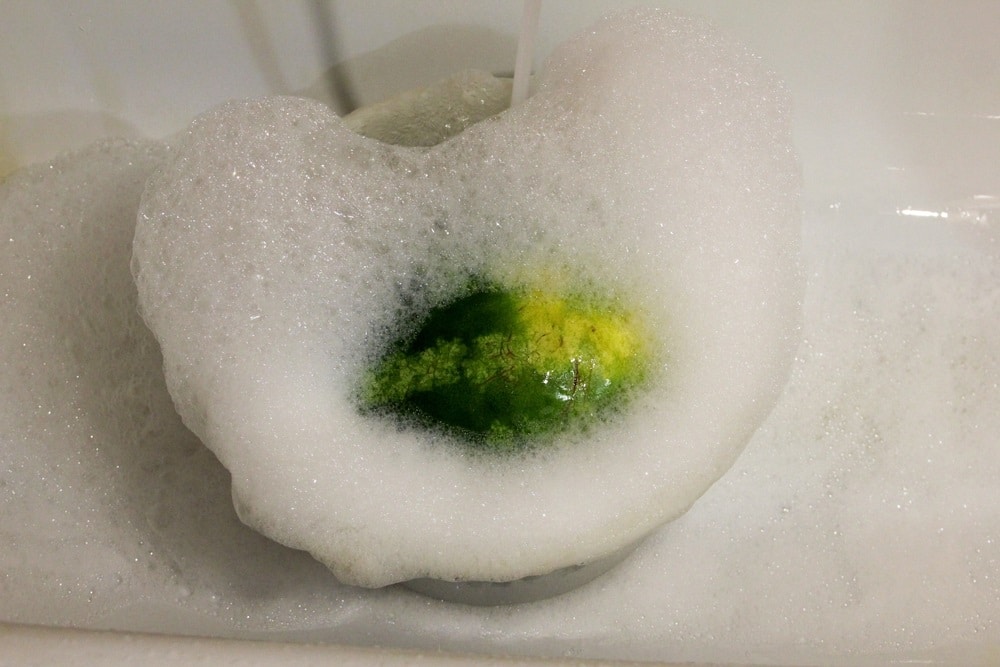
Watermelon is such an iconic summer fruit but keeping such a big fruit cold can be difficult. There have been many reports of the watermelon foaming after purchase or after being left out on the kitchen counter for a while.
If you’re dealing with a similar situation and don’t know why your watermelon might be foaming, then here are a few reasons to give you more perspective.
Why Is My Watermelon Foaming?
Managing food items is not easy, especially in summer when many foods and beverages need chilling and your fridge space is limited. It is best to only buy weekly groceries and avoid stocking up for the whole month if you don’t have enough storage.
Otherwise, there is a good chance that you’ll be dealing with loads of waste and fresh produce that is no longer fresh, crisp, and a pleasure to eat. So, keep that in mind and keep your purchases to a minimum when it comes to fruits like watermelon.
Regarding watermelon specifically, unless you have a large family or are hosting a party, it is best to look for wedges of the fruit rather than buying a whole melon.
This method has the added advantage of letting you see inside the melon and ensure it is ripe and fresh.
1. Hotter Temperature
The first thing that promotes foaming is the hotter temperatures in summer. The flesh containing sugar inside the skin starts to ferment, making foam as part of the process. You won’t be able to make use of this watermelon in any way.
So, instead of just adding this foaming melon to the fridge contents, throw it away immediately. You cannot fix the problem by chilling the fruit at this stage.
Depending on the severity of the foaming process, there is a chance that your watermelon might explode, and you will have to deal with an awful rotten smell in your kitchen. Get rid of it asap!
2. Fermentation
The primary phenomenon that promotes this foaming is the conversion of sugar into alcohol due to fermentation. This is not a good sign. If you plan on eating the watermelon, the flesh needs to be brightly colored, firm, and crisp with no signs of slime or foam.
The foam indicates that the flesh is not in good shape and is breaking down through the fermentation process. The only place for the melon at this point is on the compost pile or in the rubbish bin.
3. Rotten Flesh
If the foam is coming from a piece or slice of watermelon that was sitting for a few hours in the open, then rotten flesh is the cause of the problem.
You’ll see a discolored section around the foaming region, and the taste will be sour and a little like wine. It is not recommended to eat any more of this slice. Discard it along with any other slices that were left out of the fridge.
4. Damaged Skin
Foaming can start pretty quickly due to bacteria and fungi entering the fruit through damaged, bruised skin. Even if a small section of the watermelon skin is compromised, it will affect the whole fruit as air and bacteria enter through the wound.
This will cause the sugar contained in the fruit to start fermenting in no time. So, if the foam is coming from a small hole in the skin, you will need to open the melon and assess the extent of the damage.
You may be able to get away with just cutting away the bruised section of the fruit.
5. Over-Ripe
If a watermelon is overripe or over-matured, it will go bad quickly and begin to foam. This happens when the fruits are left too long on the vines and are picked too late.
There is nothing that can be done to salvage this melon and your only options are to either bag it up with the garbage or add it to the compost pile. This fermented melon should not be used in any recipe.
You may wish to know how to tell if a watermelon is ripe or overripe.
- Thump it with your fist. (Not too hard!)
If the melon is ripe, it will give out a deep hollow sound as if someone is knocking on your door. If the melon is overripe, it will give out a dull thudding sound and should not be bought.
- Check the weight
We don’t mean literally weigh it on a scale but pick it up and estimate the weight in comparison to the size. If it is fairly heavy and feels sturdy, it is probably ripe. If it feels exceptionally heavy for its size, this is a sign that the fruit is overripe.
- Give it a sniff
If the melon is ripe, you should be able to detect its sweet aroma through the skin. If there’s no smell at all, the melon is probably unripe. If there is a strong, pungent smell, the fruit is probably overripe and will start to foam soon.
- Check the blossom end (opposite the stem)
This end should be firm and solid. If it is mushy or soft, the melon is overripe.
6. Pressure Buildup
Lastly, it is the pressure build-up after the fermentation has set in that causes the foam to come out of any tiny opening in the melon skin. Be careful, the pressure inside the melon can become high enough for the foam to burst the skin!
Bag the melon up carefully and carry it out to the garbage or there will be foul-smelling rotten melon flesh all over your kitchen. (If this happens, a baking soda solution will help you to get rid of the odor.)
Storing Watermelon Correctly To Prevent Foaming
- Use the swimming pool
Let’s say it is summer and you have purchased or been given a huge watermelon that is too big for the fridge. Before it is cut, you can keep it in the swimming pool. It will float and the water will keep it cool.
Alternatively, keep it in a big bucket or plastic container filled with water in a cool, shady place outdoors. Of course, once the melon has been cut, you cannot store it like this. Also, do not keep it for more than a couple of days like this, especially if your pool is in a sunny position.
- Keep it in a cool, dark, dry place
You can store the melon on a cold basement or pantry floor for a few days. Ensure it is away from other fruit though as they give off ethylene gas which will cause further ripening and quick decomposition.
- Keep it in the fridge
If your melon is in cubes or slices, wrap them tightly with clingfilm or use an airtight container. Put this into the vegetable compartment of the fridge and use the fruit within two or three days.
- Store it in the freezer
While frozen melon will not be palatable for eating in chunks, it is great in fruit soups, smoothies, sorbets, or granitas.
Simply remove all skin and seeds, cut the melon into chunks, and freeze them on a parchment-lined tray. Once they are frozen, put the chunks into an airtight container and use them within two months.
To Conclude
We hope you now have a better understanding of why your watermelon is foaming. It is never a good sign and once the fruit has reached that point, the only thing to do is throw it away.


